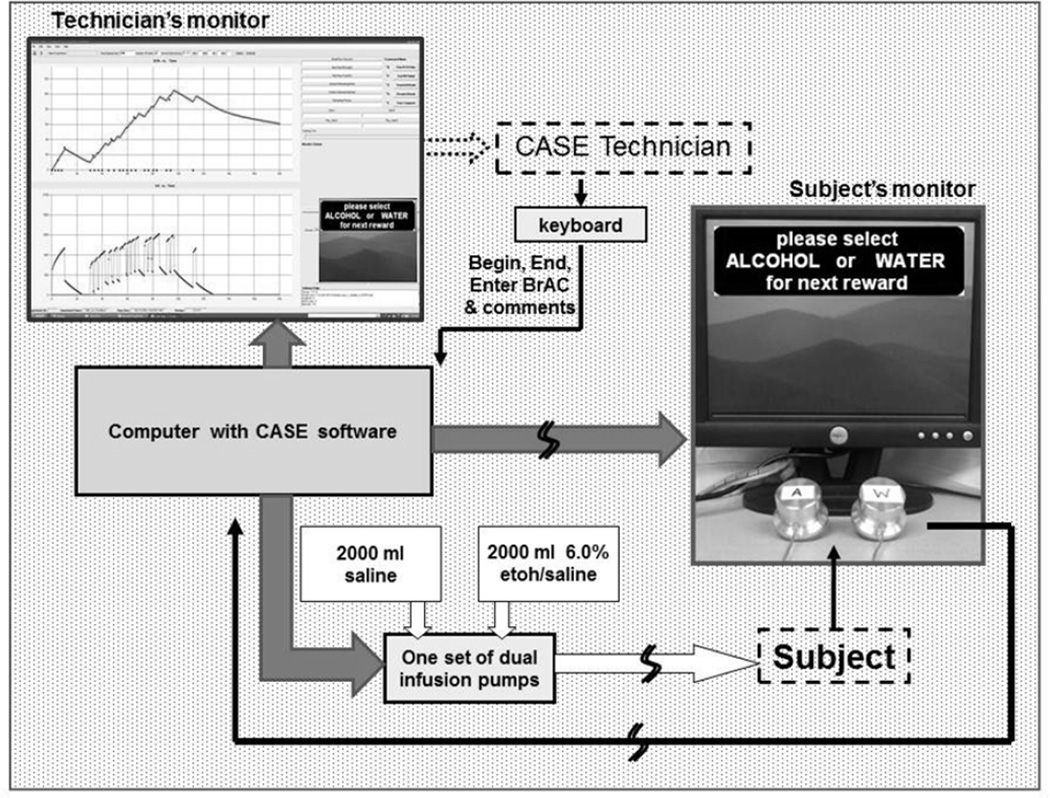Figure 1.
CASE comprises an IARC software application that manages the real-time interaction between a subject, a PBPK model, MatLab Simulink, a technician, infusion pumps and two computer monitors. The physiologically-based pharmacokinetic (PBPK) model describes alcohol distribution and elimination with parameters tailored to that subject; Simulink solves the model’s differential equations once every 3 sec to accurately predict the future time course of the subject’s brain exposure for the remainder of the 2 hour experiment. When an alcohol reward is earned, the infusion rate is recalculated to yield an increment in breath alcohol concentration (BrAC, mg%) that increases steadily over 2.5 min by a prescribed amount and then decreases at a constant rate until another alcohol reward is delivered. CASE includes a preset BrAC safety limit and will not infuse alcohol if that infusion would yield a BrAC exceeding the safety limit (120 mg% in this experiment, although the work schedule precluded maximum BrACs above 75 mg%). Through infusion, CASE dissociates expectation based on taste and smell from the pharmacological effects of alcohol.

